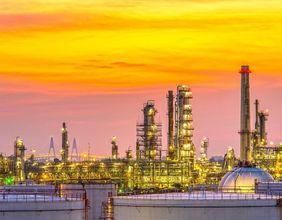Symbiotic relationship between agriculture and photovoltaic energy.
CALI, VALLE DEL CAUCA, COLOMBIA, July 28, 2023/EINPresswire.com/ -- In the global effort to decarbonize the planet, electricity production technologies with renewable energy sources such as photovoltaics from sunlight and wind from wind, become increasingly important, in such a way that countries promote their development and implementation through economic incentives in duty import or taxes reduction, to achieve accelerated growth and have new sources of electricity.The photovoltaic technology on a large scale, although it is a clean energy source, it also has a negative impact when people decide to leave the activity agriculture and lease the land for the installation of solar panels, which could represent a threat to the food security of the planet. This argument can be strengthened when people perceive that the profitability of using land for crops is significantly lower compared to leasing land for the installation of photovoltaic parks, motivated by the high costs of the activity agriculture in aspects such as supplies, public services and labor.
Agriculture and photovoltaic energy can be complementary activities, and the land use would be more profitability for farmers. This can be achieved thinking as a type of symbiotic relationship between the two activities, it is a matter of potentiating the benefits that one activity can offer to the other, this is known as Agrivoltaic Energy.
Photovoltaic installations can be designed with heights and spaces between rows of solar panels, which regulate the amount of sunlight received by the plants, preventing excess sunlight from affecting crop productivity. In this sense, it is necessary to study which are the types of plants that benefit from the indirect action of the sun, improving their performance. The spaces between rows of panels must allow the activity of maintenance of the crop and the harvest.
Solar panels also offer protection for the soil, preventing the direct action of the sun from evaporating its humidity in an accelerated way, this reduces the irrigation needs for the crop and consequently reduces water consumption. In addition to this, part of the production of electrical energy from the photovoltaic installation can be allocated to meet the needs of agricultural activity and the entire farm, then there will be a scenario of self-sustaining agriculture with a significant reduction in production costs.
Given that the electrical energy needs of the agricultural activity only take a part of the energy production capacity of the photovoltaic installation, the farmer will be able to sell the surplus energy to a company that markets it in the energy market, in this way the use of the land will be diversified, it will have income from crops and also income from the sale of electrical energy produced, which will represent a better profitability compared to the contribution of any of the two activities individually.
It remains to mention the benefit that plants can provide to the solar installation, which is in their transpiration activity, creating an environment that helps reduce the temperature of the solar panels, increasing their efficiency and consequently a greater production of electrical energy.
The concept of Agrivoltaic Energy is not new, however, its implementation has not yet become widespread due to the challenge represented by the performance obtained from a certain crop, some research has been carried out in the United States and Europe to identify the types of crops that can be favorable in this type of application with satisfactory results, however, the potential of Agrovoltaic Energy is still wide and research must continue.
This does not mean that the conditions are not given to implement an agrovoltaic installation, on the contrary, currently there are artificial intelligence tools, big data, among others, that facilitate the analysis of information on temperature, wind, humidity, radiation solar, atmospheric pressure, precipitation, soil quality, among other variables, which would allow modeling the appropriate agrovoltaic installation for a certain geographical location.
The development possibilities of Agrivoltaic Energy are wide, the development of new photovoltaic parks integrated with agriculture represents the best alternative for sustainable development, it is only necessary to assume the challenge of carrying out detailed studies using the correct information, with this it is guaranteed that the land use contributes more significantly both to the profitability expected by the farmer, and to the arduous task of decarbonizing the planet.
Camilo Andres Ruiz Morales
CAMILO RUIZ - Electrical Engineering
[email protected]
Visit us on social media:
LinkedIn


_06_24_2025_03_45_59_650550.jpg)



